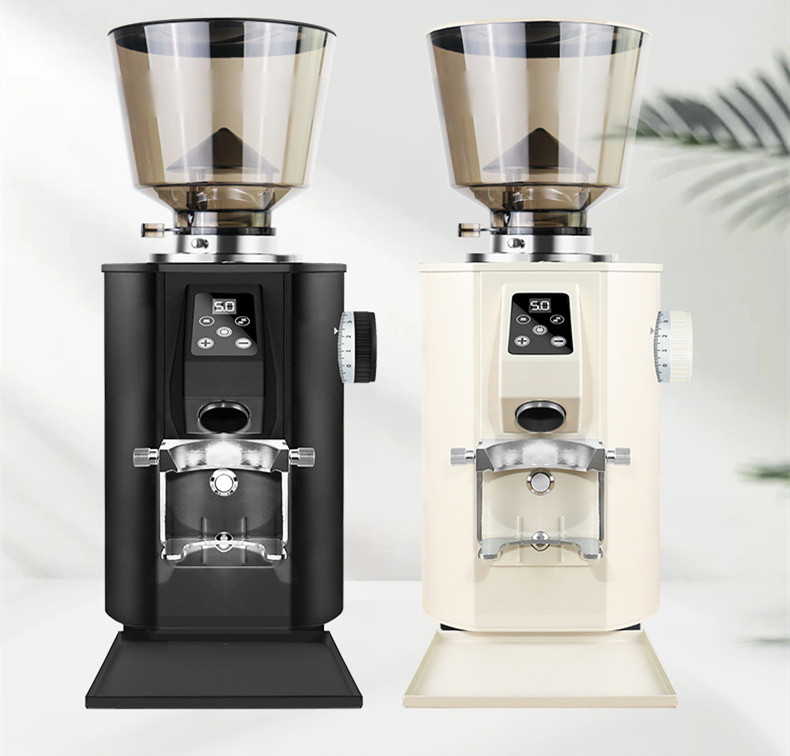Leveraging Coffee Grinding to Create Distinctive Competitive Advantages
In the crowded coffee market, differentiation hinges on delivering unique experiences that resonate with consumers. Grinding, often overlooked as a mere technical step, holds untapped potential to shape a coffee’s identity, flavor, and sustainability narrative. By refining grinding practices, businesses can carve out niche positions, attract loyal audiences, and command premium perceptions. Below, we explore how strategic grinding techniques can transform coffee into a standout offering.
Crafting Flavor Profiles Through Grind Precision
Flavor is the heart of coffee’s appeal, and grinding is the bridge between raw beans and sensory delight. Tailoring grind size, consistency, and method to specific brewing techniques allows brands to create signature flavor profiles that set them apart.
Brewing-Method-Specific Grinds
Different brewing methods extract flavors uniquely, and grind size must adapt accordingly. For instance, a coarse grind for French press coffee prevents over-extraction, preserving bright acidity and full-body notes. Conversely, a fine grind for espresso maximizes surface area, unlocking concentrated flavors like caramel and dark chocolate. By emphasizing these method-specific grinds, brands can position themselves as experts in flavor optimization, appealing to enthusiasts who seek precision.
Micro-Adjustments for Nuanced Tastes
Even subtle changes in grind size can dramatically alter flavor. A slightly finer grind for pour-over coffee might emphasize floral aromatics, while a coarser setting could highlight nutty undertones. Brands that educate consumers on these nuances—through brewing guides or interactive tasting sessions—create a perception of sophistication. This approach transforms coffee from a generic product into a customizable experience, fostering deeper engagement.
Layering Flavors Through Blend Grinding
Combining beans from different regions or roast levels and grinding them together can create complex, multi-dimensional flavors. For example, blending a fruity Ethiopian bean with a chocolatey Brazilian bean and adjusting the grind to balance their extraction rates can yield a unique profile. Marketing such blends as “artisan-crafted” or “terroir-inspired” adds exclusivity, attracting consumers who crave novelty and depth.
Sustainability as a Grinding Differentiator
As environmental consciousness rises, sustainability becomes a powerful lens for differentiation. Grinding practices that minimize waste, energy use, and carbon footprints can position a brand as ethically superior.
Energy-Efficient Grinding Technologies
Traditional grinders often consume excessive energy, but innovations like low-wattage motors or solar-powered models reduce environmental impact. Highlighting these features in marketing materials—such as “carbon-neutral grinding” or “energy-star certified”—appeals to eco-conscious buyers. Brands can also share data on reduced energy consumption per batch, reinforcing their commitment to sustainability.
Zero-Waste Grinding Systems
Coffee grounds, a byproduct of grinding, can be repurposed into compost, biofuels, or even skincare products. Implementing circular economy models—like partnering with local farms to distribute used grounds—creates a narrative of responsibility. Brands might label their products as “zero-waste certified” or share stories of how repurposed grounds support community gardens, adding emotional value and differentiating them from competitors.
Local Grinding for Reduced Footprints
Grinding beans locally, rather than shipping pre-ground coffee globally, cuts transportation emissions and supports regional economies. Brands that partner with smallholder farmers and process beans in-house can emphasize their “farm-to-grind” approach. Certifications like Fair Trade or Rainforest Alliance, combined with transparent storytelling about local sourcing, reinforce ethical credentials and attract socially aware consumers.
Customization and Personalization Through Grinding
In an era of hyper-personalization, offering tailored grinding options transforms coffee from a commodity into a bespoke experience. Consumers crave products that reflect their unique preferences, and grinding is the key to delivering this.
On-Demand Grinding Services
Cafes and roasters can introduce “grind-to-order” stations where customers select their preferred grind size, brewing method, and even flavor intensity. This interactive approach fosters engagement and positions the brand as innovative. For example, a customer might choose a “bold espresso grind” or a “light filter grind,” creating a sense of ownership over their coffee.
Subscription Models with Grind Variety
Subscription services that rotate grind profiles based on seasonal beans or consumer feedback add value through novelty. A monthly box might include a coarse grind for cold brew, a medium grind for drip coffee, and a fine grind for espresso, encouraging subscribers to experiment. Educational content, such as brewing guides or flavor pairing suggestions, deepens the connection and positions the brand as a thought leader.
Collaborations with Artisans
Partnering with chefs, mixologists, or chocolatiers to create signature grind blends adds exclusivity. A limited-edition grind designed for pairing with dark chocolate or craft beer can attract food enthusiasts willing to pay a premium for a unique experience. Limited availability and storytelling around the collaboration’s inspiration enhance perceived rarity, differentiating the brand in a saturated market.
Enhancing Sensory Appeal Through Grind Aesthetics
Visual and tactile elements influence purchasing decisions, and the presentation of ground coffee can elevate its perceived value. Thoughtful packaging and grind consistency contribute to a premium image.
Uniformity as a Quality Indicator
Consumers associate consistent grind particles with professionalism and care. Brands that invest in high-precision grinders can highlight this uniformity on packaging, using phrases like “laboratory-grade grind” or “micro-adjusted for perfection.” This technical language appeals to discerning buyers who equate precision with quality, setting the brand apart from mass-market competitors.
Packaging Innovations
Reusable or biodegradable containers with airtight seals preserve freshness while reducing plastic waste. Transparent windows that showcase the grind’s texture add authenticity, allowing customers to see the product’s quality before purchase. Brands might also use minimalist designs or artisanal labels to evoke a handcrafted feel, appealing to consumers who value aesthetics and sustainability.
Storytelling Through Grind Origins
Sharing the story behind the grind—such as the altitude of the beans, the roasting technique, or the farmer’s expertise—creates emotional value. A label that reads “Hand-ground in small batches from single-origin Ethiopian beans” transports the consumer to the source, justifying a higher price through authenticity and craftsmanship. This narrative differentiates the brand by connecting consumers to the human and environmental effort behind each cup.
By prioritizing flavor precision, sustainability, customization, and sensory appeal, grinding becomes a catalyst for differentiation. These strategies not only enhance the coffee’s intrinsic qualities but also foster deeper connections with consumers, transforming ordinary coffee into a memorable, premium experience.


